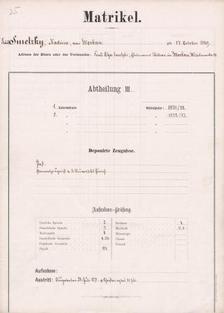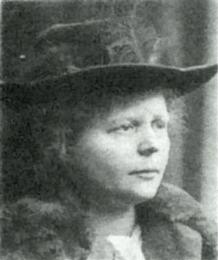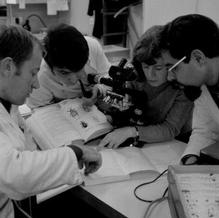From the first female student to today's female researchers
Women at Universities: The Beginnings

When ETH Zurich was founded in 1855, it became the second European university to admit women to its study programs. Since, at that time, there were no upper secondary schools for girls in Switzerland, those to benefit from the progressive registration terms at ETH were mostly women from abroad.
The first female student at ETH Zurich was Nadezda Smeckaja from Russia, who, in 1871, registered for the Mechanical Engineering study program. A compatriot of hers, Marie Kowalik, was the first woman to graduate from ETH, having studied Agronomy and Forestry. However, female ETH students remained the exception for many more years. Only in Pharmacology and Teaching study programs, was the number of women not as low as in other study fields.
First Female Scientists

In Switzerland, it was very difficult for a woman to become a researcher. When, in 1897, Marie Baum started working as the first female scientific research assistant, there was major resistance against her employment, which was first limited to one year only. Hedwig Delpy and Laura Hezner were the first women to obtain a doctoral degree and a postdoctoral lecture qualification in 1909 and 1910, respectively. However, they did not continue their research at ETH. Marianne Plehns, an ETH graduate in Agronomy, was one of the first women to be appointed for a professorship in Germany.
For female scientists, the chance of finding adequate employment was limited, since only very few professors, e.g. geologist Heim or biologist Schröder, remained unimpressed by public criticism. Heim was the husband of the first female medical doctor in Switzerland, Marie Heim-Vögtlin. As the first female Swiss student at the University of Zurich, Marie Heim caused a countrywide controversy in Switzerland. Today, the promotion program for women of the Swiss National Science Foundation is named after her.
From the Struggle for Working Rights for Women to the First Female Professor

The majority of female students from abroad returned to their home countries with the outbreak of World War I, causing the proportion of women among students to drop drastically. Between the two world wars, the right for women to work became one of the main goals of the different women's organizations in Switzerland. In 1928, the Swiss Exhibition for Women's Work was organized in Bern. The artistic director of the exhibition was Lux Guyer, one of Switzerland's first female architects, who had completed part of her studies at ETH Zurich.
Thanks to the liberalization of society and the sustained economic growth after World War II, the number of female students at universities rose continuously. The growth in the proportion of women at ETH was significantly lower than at other universities, which was attributable to its technical focus. An exception were Pharmacology and Biology, which arose considerable interest in female Matura graduates. Consequentially, it was a biologist, who, in 1979, was appointed ETH's first female honorary professor: geobotanist Krystina Urbanska. However, it was only in 1985, when ETH Zurich got its first ordinary female professor, with the appointment of architect Flora Ruchat-Roncati.
Establishing Specific Promotional Measures

Female students and female scientists at ETH Zurich began to stand up for their interests quite at the same time. Women started criticizing that the promotion and working structures in research were tailored specifically for men and asked for more women to be appointed to professorships, for specific measures to promote young female scientists, and for the creation of daycare places for children.
In 1993, all these efforts resulted in the foundation of ETH's Office of Equal Opportunities. Geologist Katharina von Salis played an important role in the whole process. She first had a consultative function within Equal!. Later on, she became a co-initiator and the first president of the Swiss Federal Equal Opportunities program. In this position, her achievements for women at Swiss universities were remarkable. ETH president Jakob Nüesch was also very committed to the cause. When he resigned in 1997, there were twelve ordinary and extraordinary female professors as well as five honorary and eight assistant professors working at ETH Zurich.
During the last years, the proportion of women amond students and doctoral students amounted to around 30%. However, on the level professor, 18% women are present. Current numbers an be found in the yearly Equality Monitoring. ETH wants to further increase the proporiton of women among students and researchers and is investing into promotional measures on all levels. Further information can be found in the Gender Action Plan.
